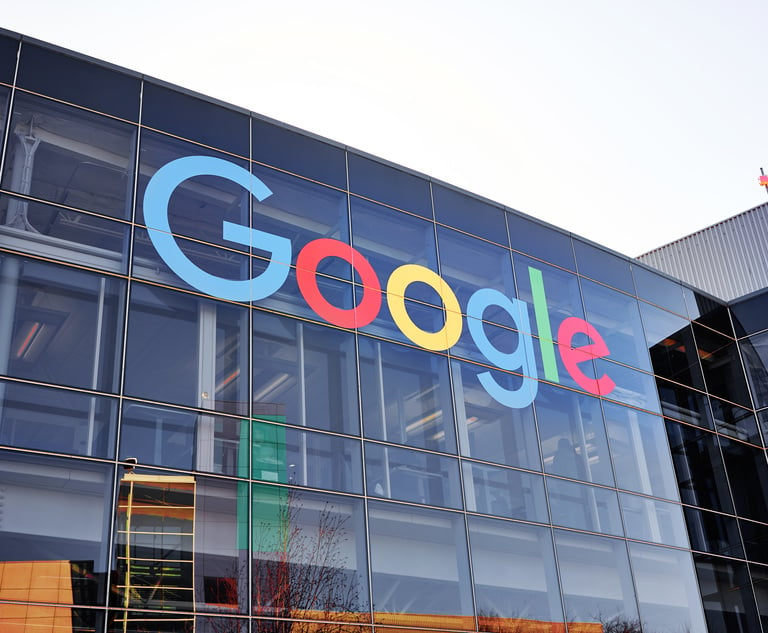Even Grande-Sized Stars Are Not Immune to Copyright Infringement Claims
In January, Ariana Grande joined a not-so-exclusive and ever-growing club; just like Macy's, General Motors and the National Rifle Association, she was recently sued by a visual artist for copyright infringement.
March 04, 2019 at 04:59 PM
6 minute read
 Kimberly Almazan, special counsel with Withers.
Kimberly Almazan, special counsel with Withers.
In January, Ariana Grande joined a not-so-exclusive and ever-growing club; just like Macy's, General Motors and the National Rifle Association, she was recently sued by a visual artist for copyright infringement.
The lawsuit against Grande was filed in Nevada federal court, Kush v. Grande-Butera, U.S. District Court, District of Nevada, Case No. 2:19-cv-00186-GMN-VCF, by artist Vladimir Kush, whose work is reminiscent of the early 20th-century, avant-garde “Surrealist” movement. Kush created and registered copyrights for two separate paintings that depicted the silhouette of a woman with raised arms as the wick in the center of the flame of a candle, against a backdrop of clouds. Grande, who recently enjoyed success with a hit song titled, “God is a Woman,” created a corresponding music video for her song. Kush claims that certain portions of the music video feature images of a silhouette of Grande as the wick in the center of the flame of a candle, and that those portions of the music video are “nearly identical” to his copyrighted paintings. Along with Grande, the music video's director, producer and production company were sued, as was her recording label.
To successfully bring a claim for copyright infringement, a plaintiff must show ownership of the copyright and unauthorized copying by the defendant. If the plaintiff does not have direct evidence of copying (and courts have noted that such direct evidence is seldom available), copying can be established by demonstrating that the defendant had access to the plaintiff's work and the works are substantially similar. “Access” means that defendant had an opportunity to view the plaintiff's work, though some courts infer access if the works at issue are strikingly similar. The U.S. Court of Appeals for the Ninth Circuit, in Roth Greeting Cards v. United Card, 429 F.2d 1106, 1110 (9th Cir. 1970), created the “total concept and feel” test in determining infringement. This test compares elements of the two works, including the characters depicted in the artwork, the mood portrayed, whether the mood is conveyed with a particular message and the similarity of any lettering. The Roth court also held that, at its foundation, “the test of infringement is whether the work is recognizable by an ordinary observer as having been taken from the copyrighted source.”
Kush's complaint alludes to Grande's access to his paintings. He claims that images of the paintings at issue appear on two different websites that he manages, and that the paintings are available in a published book by Kush that is “widely available to the general public for purchase.” He also alleges substantial similarity, and indeed a comparison of Kush's paintings and the scene from the music video in question appears, to a casual observer, to be quite similar. Also likely relevant to the court's analysis is the fact that, in 2018, Grande's co-defendants, her music video director and producer, were sued for copyright infringement by a different visual artist for allegedly using images of her artwork in a different music video.
Grande is not the only high-profile name defending against copyright infringement claims; in fact, 2018 was an active year for similar cases involving fine artists. First, clothing retailer H&M sued street artist, “REVOK,” for declaratory judgment after REVOK sent a cease and desist letter claiming that H&M had used his public art in an advertising campaign in H&M Hennes & Mauritz GBC AB v. Williams, U.S. District Court, Eastern District of New York, Case No. 1:18-cv-01490. Mere days after filing the lawsuit, H&M voluntarily dismissed the litigation, likely due to a public outcry and potential boycott of the H&M brand by fellow artists and the public. Second, General Motors was sued by a graffiti artist after a mural created by the artist on a Detroit parking garage was used in an advertising photograph for a Cadillac crossover sport utility vehicle. See Falkner v. General Motors, U.S. District Court, Central District of California, Case No. 2:18-cv-00549-SVW-JPR. General Motors moved for summary judgment, arguing that the mural was “part of,” an architectural work—here, a parking garage—and thus could not be protected by copyright laws. The court disagreed, holding that the mural was not designed to appear as part of the parking garage, did not serve a functional purpose related to the parking garage and did not match the design elements of the garage. The case settled shortly thereafter. Third, Anish Kapoor, the artist famous for his “Cloud Gate” sculpture in Chicago's Millennium Park, often referred to as “The Bean,” reportedly reached a settlement with the National Rifle Association after suing for copyright infringement, see Kapoor v. National Rifle Association of America, U.S. District Court, Eastern District of Virginia, Case No. 1:18-cv-01320. Kapoor argued that the NRA, without authorization, used an image of “Cloud Gate” in a marketing video. After a few months of litigation, the NRA agreed to remove the image from the video. Finally, department store Macy's, Inc. was sued by an Austin, Texas-based artist, Todd Sanders, for displaying a wall-sized photograph of the artist's mural in the furniture section of one of its Texas stores, see Sanders v. Macy's, U.S. District Court, Western District of Texas, Case No. 1:18-cv-00945. That case too settled within months of its filing.
Companies, brands and organizations must be cognizant of the risks involved in using another's image without permission. Litigation fees can of course be substantial, but also, companies can suffer reputational harm. There are a number of steps that can be taken to minimize this risk. First, marketing employees should be trained in basic copyright law. They must understand that, even if an image does not contain a © symbol, it may still be entitled to copyright protection. Second, even if a brand believes that it created a unique work to use in a marketing campaign, it should conduct research before publishing. Third, companies should obtain insurance coverage for “advertising injury” that can cover copyright infringement claims, as well as related claims such as libel, slander, trademark infringement or violation of the right to privacy.
In a climate where fine artists are achieving copyright infringement victories in court and in settlements, companies should assume that aggrieved artists will be inspired to similarly file lawsuits. As a result, companies and brands must maintain awareness of copyright issues and err on the side of caution.
Kimberly Almazan is special counsel at international law firm Withers where she concentrates on general and complex civil litigation, art law and trade secret matters.
This content has been archived. It is available through our partners, LexisNexis® and Bloomberg Law.
To view this content, please continue to their sites.
Not a Lexis Subscriber?
Subscribe Now
Not a Bloomberg Law Subscriber?
Subscribe Now
NOT FOR REPRINT
© 2025 ALM Global, LLC, All Rights Reserved. Request academic re-use from www.copyright.com. All other uses, submit a request to [email protected]. For more information visit Asset & Logo Licensing.
You Might Like
View All
Apple Disputes 'Efforts to Manufacture' Imaging Sensor Claims Against iPhone 15 Technology

Lawsuit alleges racial and gender discrimination led to an Air Force contractor's death at California airfield
7 minute read
US Courts Announce Closures in Observance of Jimmy Carter National Mourning Day
2 minute read
'Appropriate Relief'?: Google Offers Remedy Concessions in DOJ Antitrust Fight
4 minute readTrending Stories
- 1Attorney Sanctioned $9K for Revealing Nude Photos, Other Info in Court Filing
- 2Shifting Battlegrounds in Administrative Law, From Biden to Trump II
- 3Bar Report - Jan. 13
- 4Newsmakers: Robert Collins, Barron Wallace Elected to Bracewell’s Management Committee
- 5Navigating the Shifting Sands of E-Discovery and Information Governance in 2025
Who Got The Work
Michael G. Bongiorno, Andrew Scott Dulberg and Elizabeth E. Driscoll from Wilmer Cutler Pickering Hale and Dorr have stepped in to represent Symbotic Inc., an A.I.-enabled technology platform that focuses on increasing supply chain efficiency, and other defendants in a pending shareholder derivative lawsuit. The case, filed Oct. 2 in Massachusetts District Court by the Brown Law Firm on behalf of Stephen Austen, accuses certain officers and directors of misleading investors in regard to Symbotic's potential for margin growth by failing to disclose that the company was not equipped to timely deploy its systems or manage expenses through project delays. The case, assigned to U.S. District Judge Nathaniel M. Gorton, is 1:24-cv-12522, Austen v. Cohen et al.
Who Got The Work
Edmund Polubinski and Marie Killmond of Davis Polk & Wardwell have entered appearances for data platform software development company MongoDB and other defendants in a pending shareholder derivative lawsuit. The action, filed Oct. 7 in New York Southern District Court by the Brown Law Firm, accuses the company's directors and/or officers of falsely expressing confidence in the company’s restructuring of its sales incentive plan and downplaying the severity of decreases in its upfront commitments. The case is 1:24-cv-07594, Roy v. Ittycheria et al.
Who Got The Work
Amy O. Bruchs and Kurt F. Ellison of Michael Best & Friedrich have entered appearances for Epic Systems Corp. in a pending employment discrimination lawsuit. The suit was filed Sept. 7 in Wisconsin Western District Court by Levine Eisberner LLC and Siri & Glimstad on behalf of a project manager who claims that he was wrongfully terminated after applying for a religious exemption to the defendant's COVID-19 vaccine mandate. The case, assigned to U.S. Magistrate Judge Anita Marie Boor, is 3:24-cv-00630, Secker, Nathan v. Epic Systems Corporation.
Who Got The Work
David X. Sullivan, Thomas J. Finn and Gregory A. Hall from McCarter & English have entered appearances for Sunrun Installation Services in a pending civil rights lawsuit. The complaint was filed Sept. 4 in Connecticut District Court by attorney Robert M. Berke on behalf of former employee George Edward Steins, who was arrested and charged with employing an unregistered home improvement salesperson. The complaint alleges that had Sunrun informed the Connecticut Department of Consumer Protection that the plaintiff's employment had ended in 2017 and that he no longer held Sunrun's home improvement contractor license, he would not have been hit with charges, which were dismissed in May 2024. The case, assigned to U.S. District Judge Jeffrey A. Meyer, is 3:24-cv-01423, Steins v. Sunrun, Inc. et al.
Who Got The Work
Greenberg Traurig shareholder Joshua L. Raskin has entered an appearance for boohoo.com UK Ltd. in a pending patent infringement lawsuit. The suit, filed Sept. 3 in Texas Eastern District Court by Rozier Hardt McDonough on behalf of Alto Dynamics, asserts five patents related to an online shopping platform. The case, assigned to U.S. District Judge Rodney Gilstrap, is 2:24-cv-00719, Alto Dynamics, LLC v. boohoo.com UK Limited.
Featured Firms
Law Offices of Gary Martin Hays & Associates, P.C.
(470) 294-1674
Law Offices of Mark E. Salomone
(857) 444-6468
Smith & Hassler
(713) 739-1250






